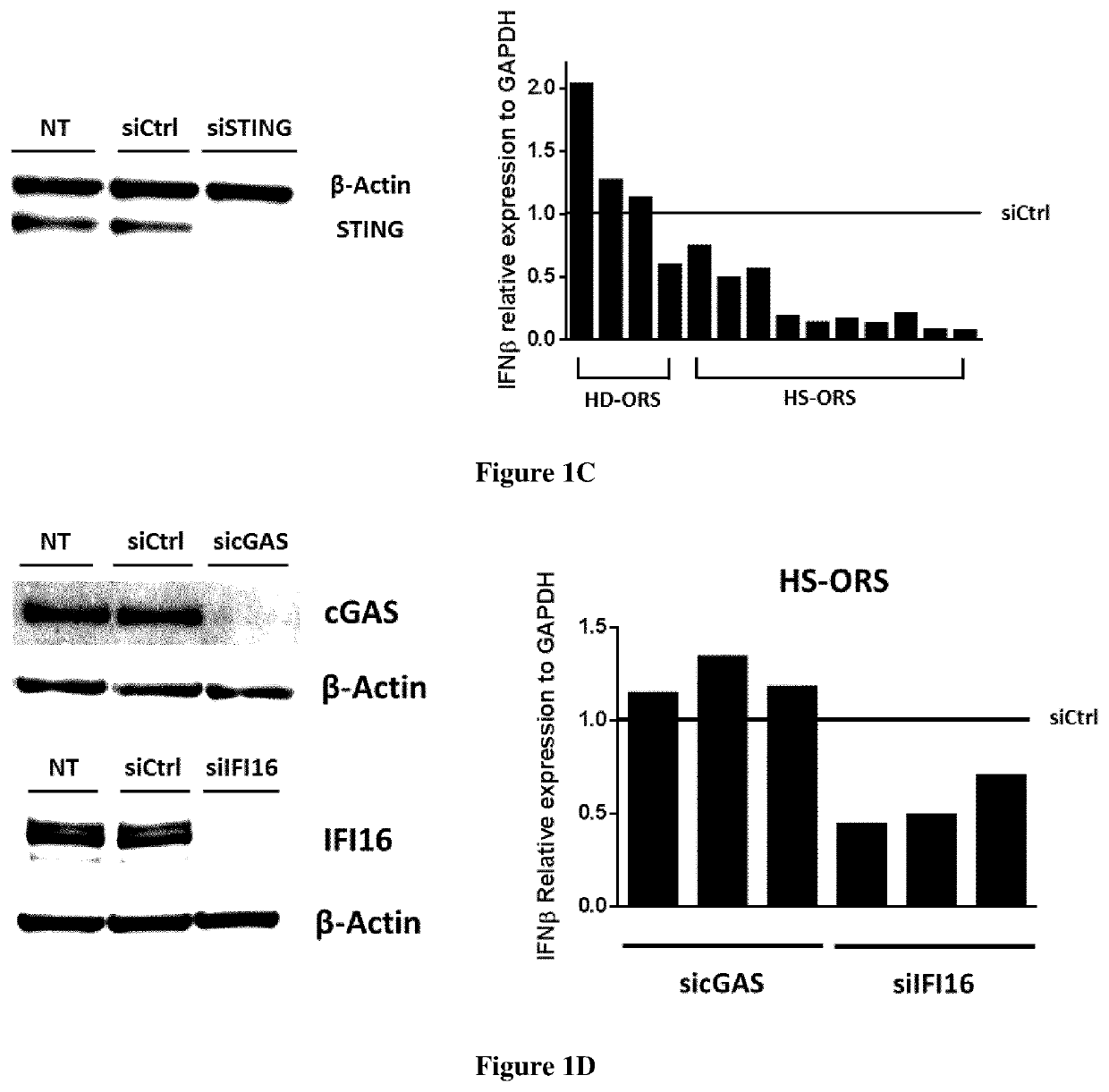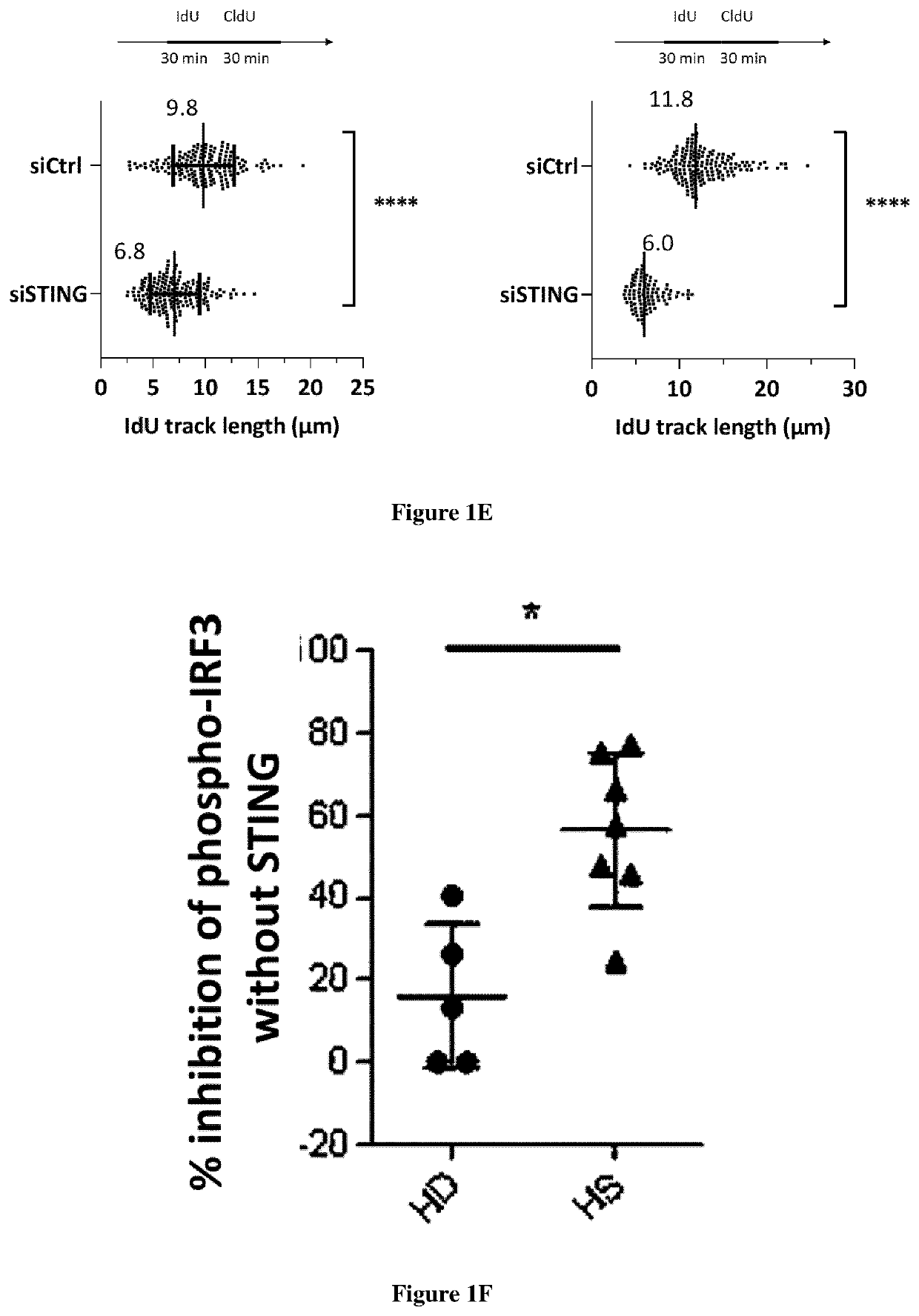Inhibitors of the sting pathway for the treatment of hidradenitis suppurativa
a technology of hidradenitis suppurativa and inhibitors of the sting pathway, which is applied in the field of skin care, can solve the problems of social embarrassment, severe physical and emotional distress, and limited effectiveness of treatment to date, and achieves the effects of reducing the risk of recurrence, and reducing the risk of infection
- Summary
- Abstract
- Description
- Claims
- Application Information
AI Technical Summary
Benefits of technology
Problems solved by technology
Method used
Image
Examples
example
[0029]Material & Methods:
[0030]Participants and Samples
[0031]Skin samples were collected at the dermatology and plastic surgery department of the Henri Mondor university hospital during unroofing of axillary or perineal lesions in 33 patients with HS and during brachioplasty or abdominoplasty in 25 healthy individuals. Hair-rich skin sites were collected from the surgical specimens and processed as described by Aasen T (6,15) in order to obtain ORS cells.
[0032]The 33 patients with HS had a mean age of 30.4 years (range, 14-71 years) and a mean body mass index of 27.1 kg·m−2; 18 (54%) were women and 12 (36.3%) were smokers. The Hurley stage was I in one patient, II in nine patients, and III in 23 patients. None of the patients used topical treatments or took immunosuppressants (Table 1). The 25 controls had a mean age of 34.5 years (range, 19-57 years); 21 were women and 4 were men. None had a history of skin disease or malignancy.
TABLE 1Patient characteristicsParametersPatients (n =...
PUM
| Property | Measurement | Unit |
|---|---|---|
| Fraction | aaaaa | aaaaa |
| Area | aaaaa | aaaaa |
| Stress optical coefficient | aaaaa | aaaaa |
Abstract
Description
Claims
Application Information
 Login to View More
Login to View More - R&D
- Intellectual Property
- Life Sciences
- Materials
- Tech Scout
- Unparalleled Data Quality
- Higher Quality Content
- 60% Fewer Hallucinations
Browse by: Latest US Patents, China's latest patents, Technical Efficacy Thesaurus, Application Domain, Technology Topic, Popular Technical Reports.
© 2025 PatSnap. All rights reserved.Legal|Privacy policy|Modern Slavery Act Transparency Statement|Sitemap|About US| Contact US: help@patsnap.com



